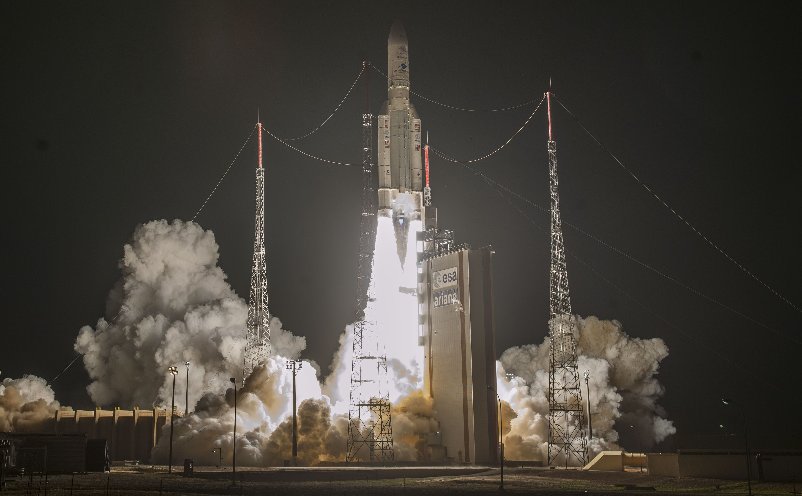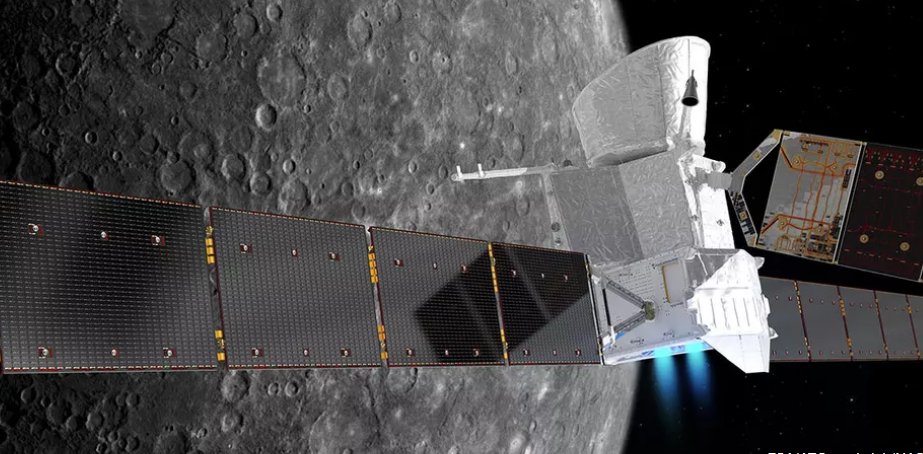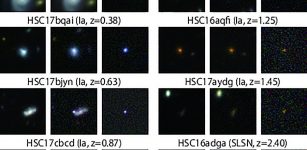BepiColombo Mission: A 7-Year-Long Voyage To Mercury Started
MessageToEagle.com – The BepiColombo mission began. It lifted off from the European spaceport in French Guiana on Oct 20, on board a powerful Ariane 5 launch vehicle.
“Not only is the mission designed to investigate the planet Mercury, it will also deliver new insights into the Solar System,” explains Walther Pelzer, Executive Board Member for the Space Administration at the German Aerospace Center (Deutsches Zentrum für Luft- und Raumfahrt; DLR).

BepiColombo – the most comprehensive European project to explore a planet in the Solar System to date – consists of a pair of satellites that will circle Mercury. One is the Mercury Planetary Orbiter (MPO) and another, the Mercury Magnetospheric Orbiter (MMO).
While MPO is designed to investigate the surface and composition of the planet, MMO will analyse its magnetosphere.
The mission also will investigate the solar wind, the inner structure and the planetary environment of Mercury, as well as its interaction with the environment nearest to the Sun.

The scientists hope that this will also deliver new insights into the formation of the Solar System.
BepiColombo is a joint mission of the European Space Agency ESA and the Japanese JAXA. Until now, only two space probes have visited Mercury. In the 1970s, the first images of the planet were provided by the American mission Mariner 10, and in the years 2011-2015 the MESSENGER ship was in its orbit.
The mission will take 7 years to reach Mercury.
During this time, the spacecraft will perform several swing-by maneuvers past Earth and Venus and even six at Mercury itself before being directed into its final orbital trajectory at its destination planet. During these swing-by maneuvers, the spacecraft uses the gravitational force of celestial bodies to gather momentum for its continued travel through space, or, and also, to decelerate.
For an orbit to be achieved, the probe must not only greatly reduce its velocity at Mercury, but also counteract the Sun’s enormous gravitational pull. MERTIS will already be performing measurements during the swing-bys of Earth and Venus.
Once it has arrived at Mercury, BepiColombo will collect data for approximately one year.
MessageToEagle.com










